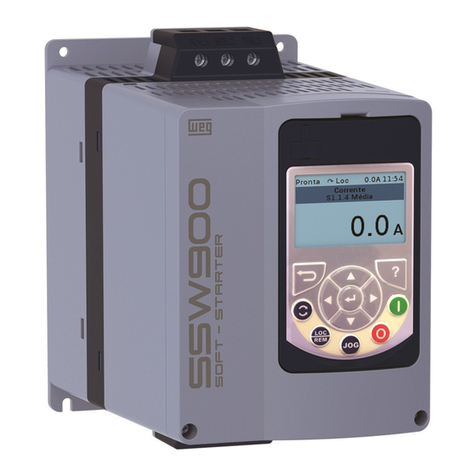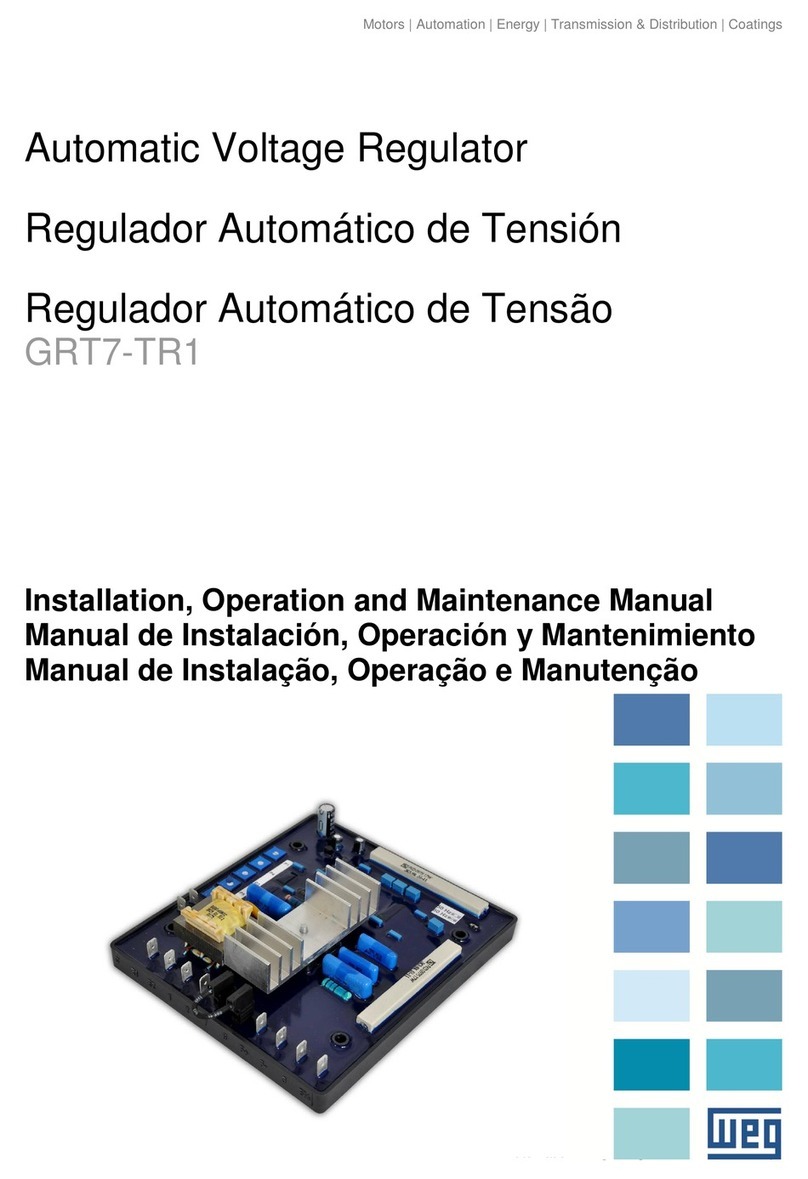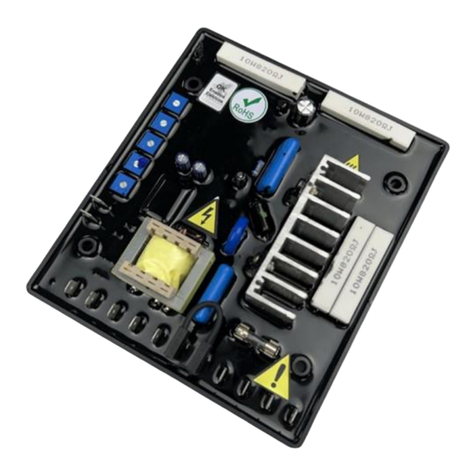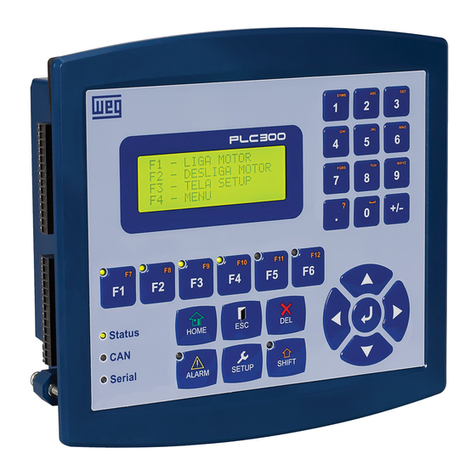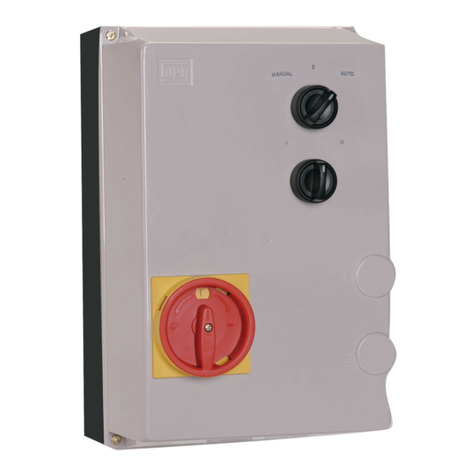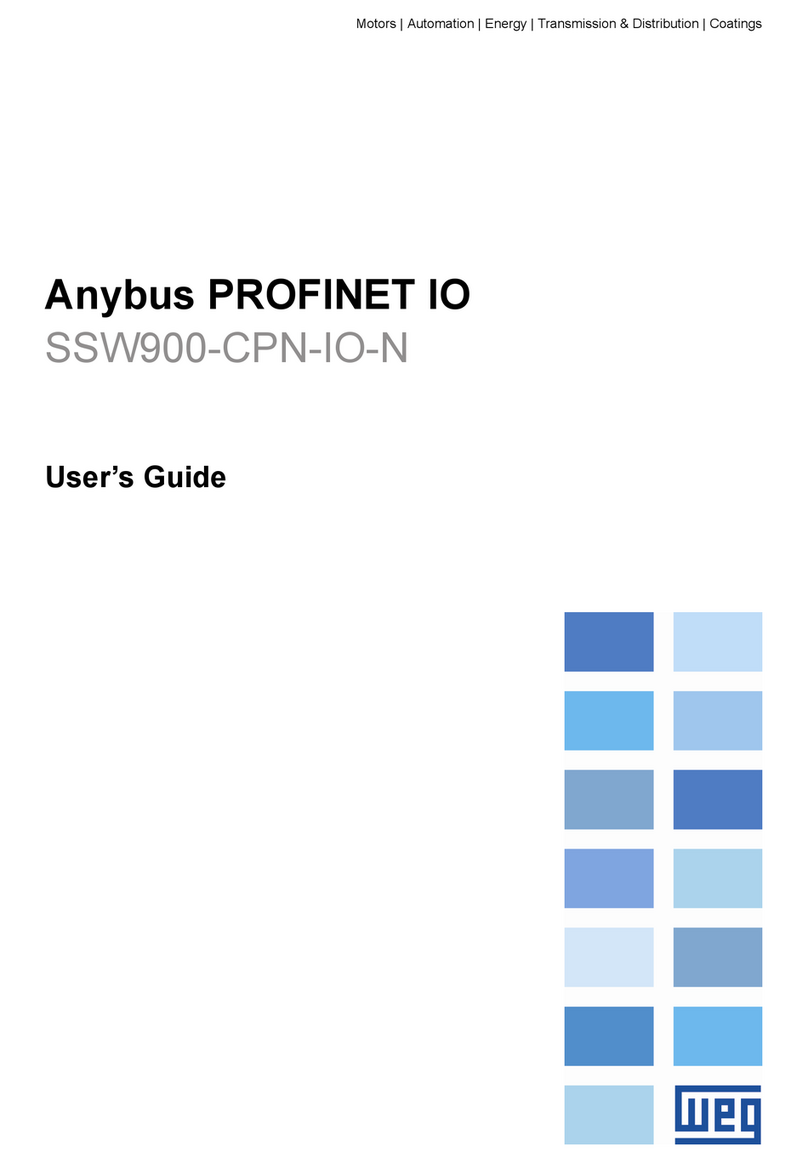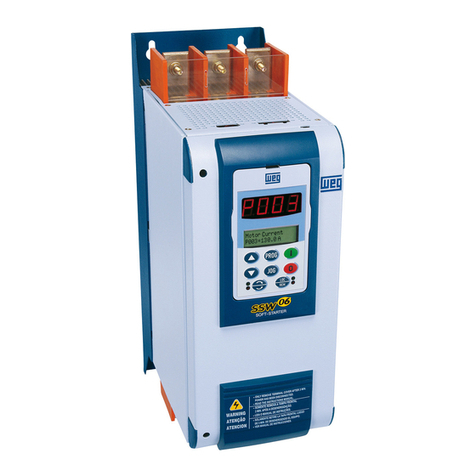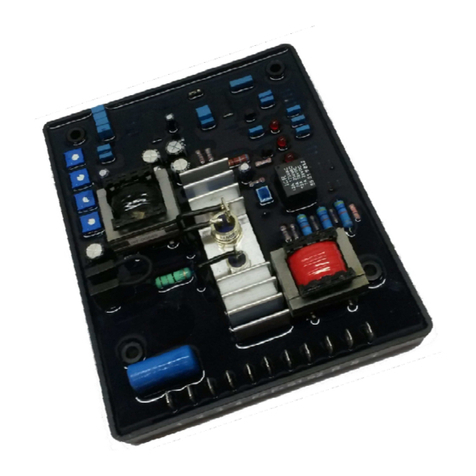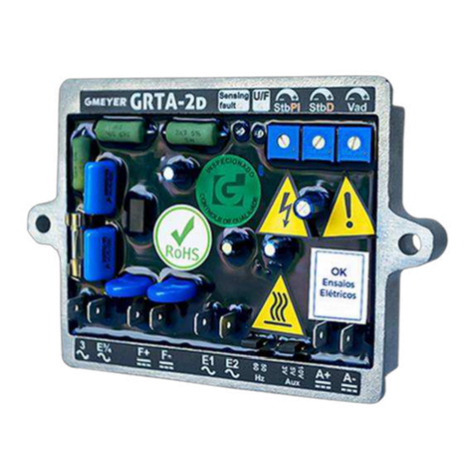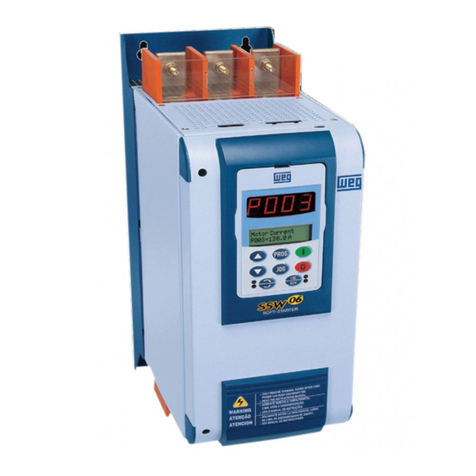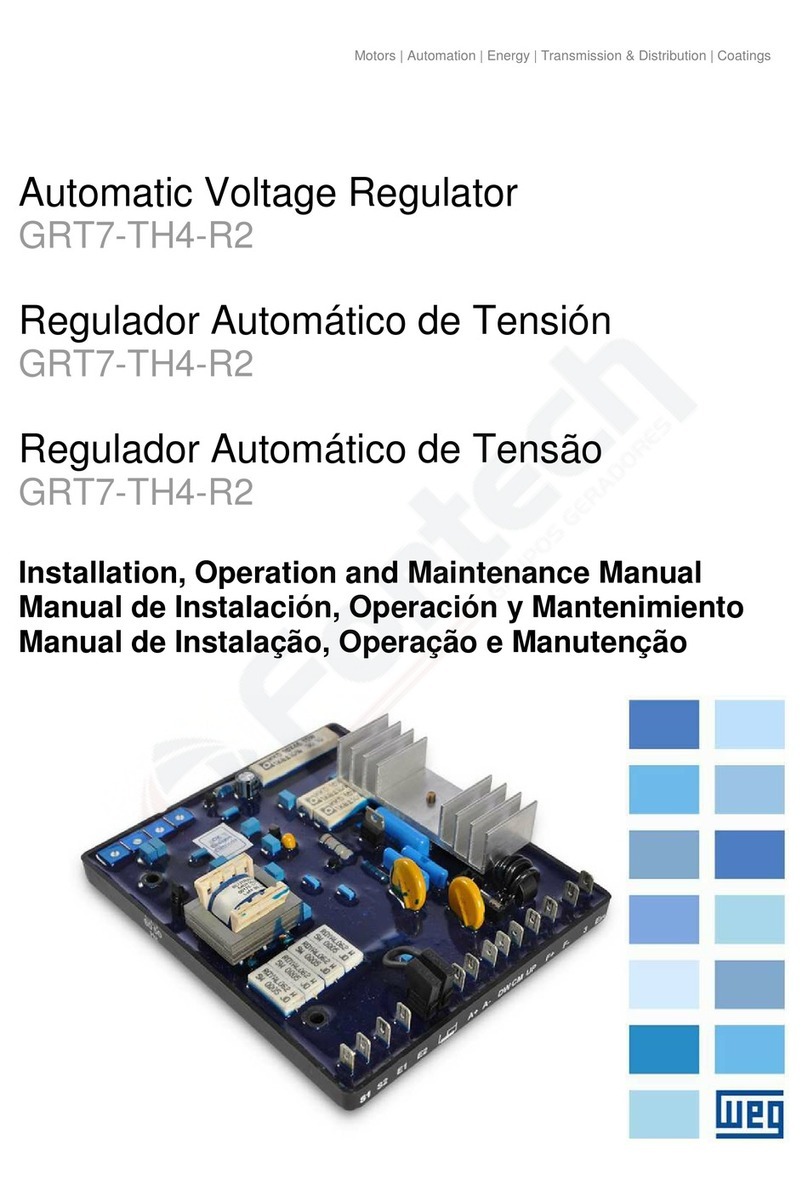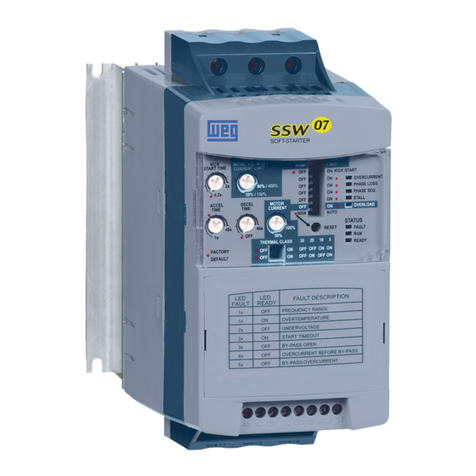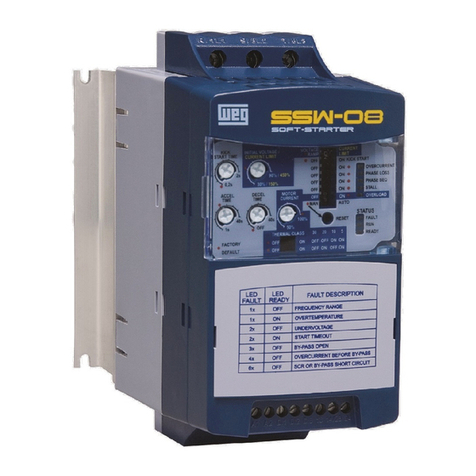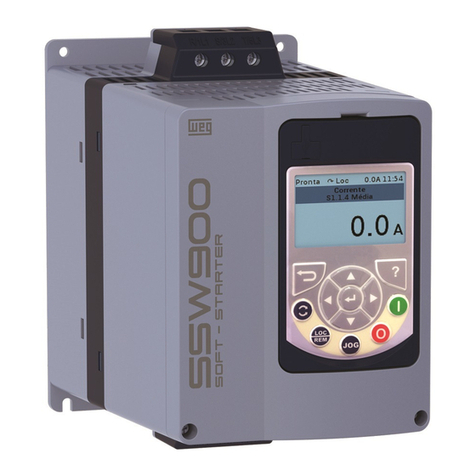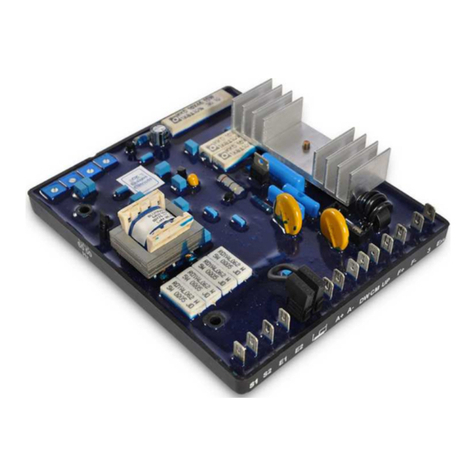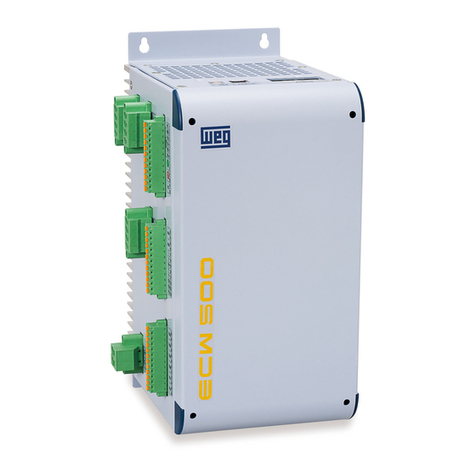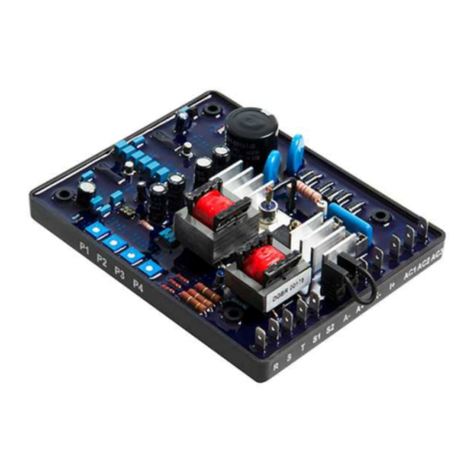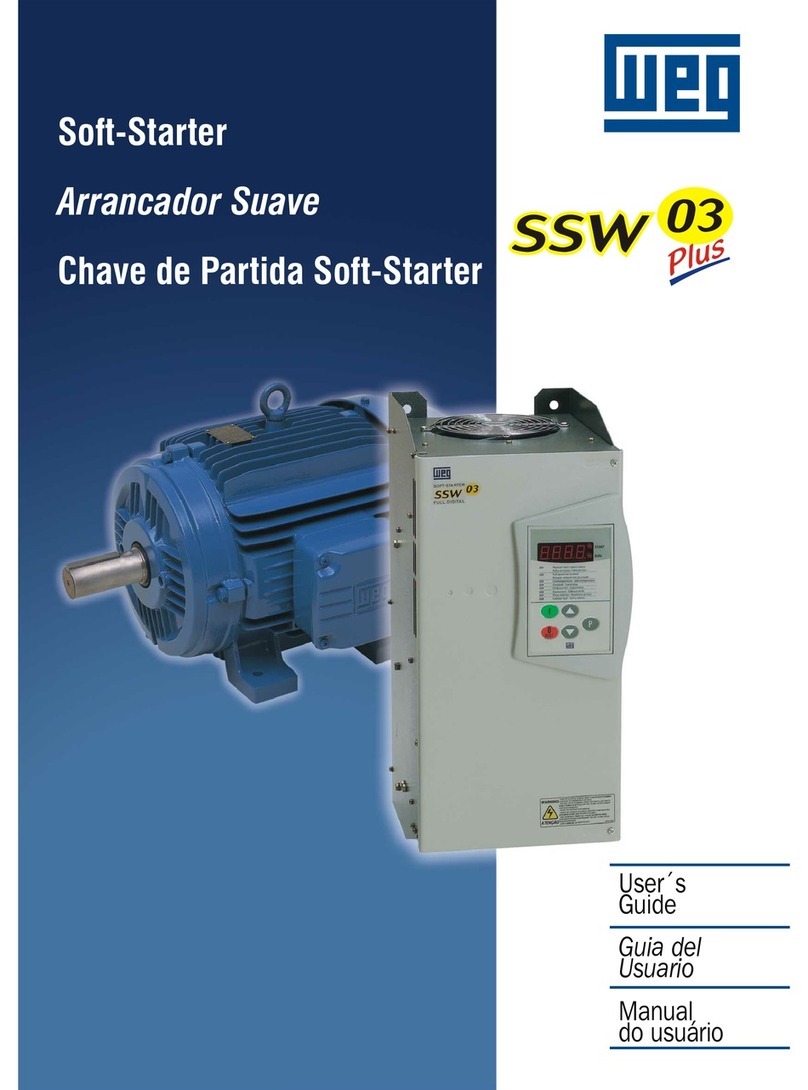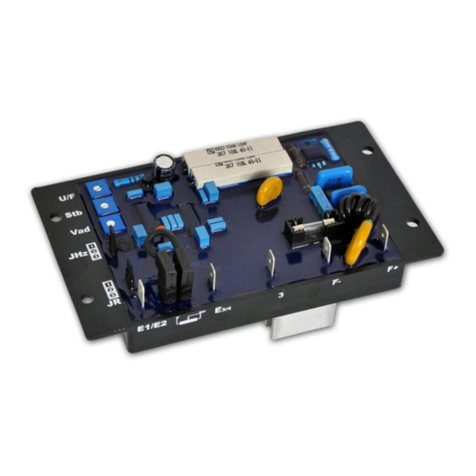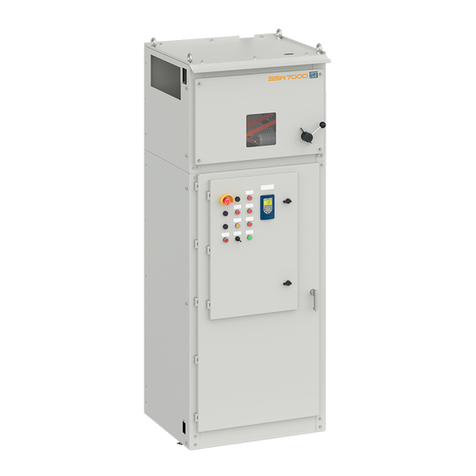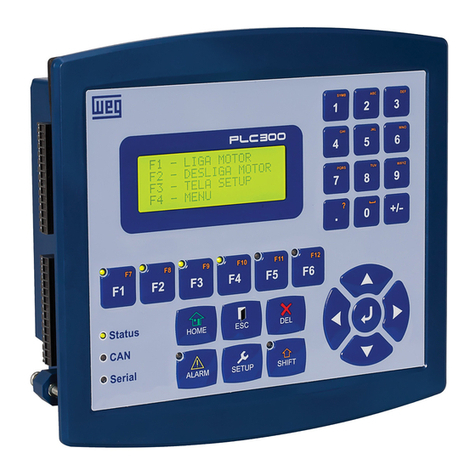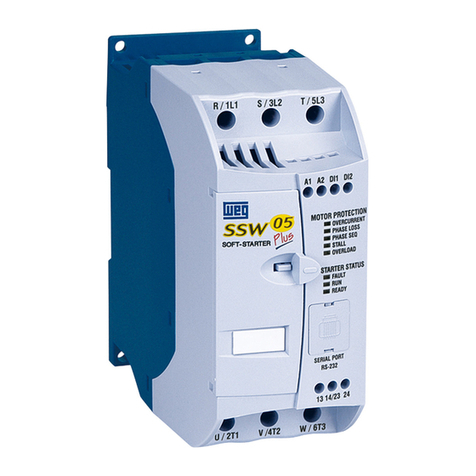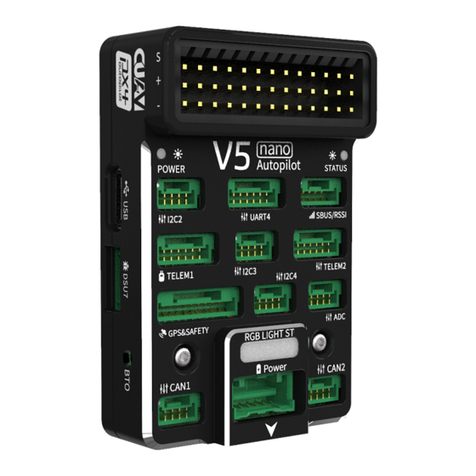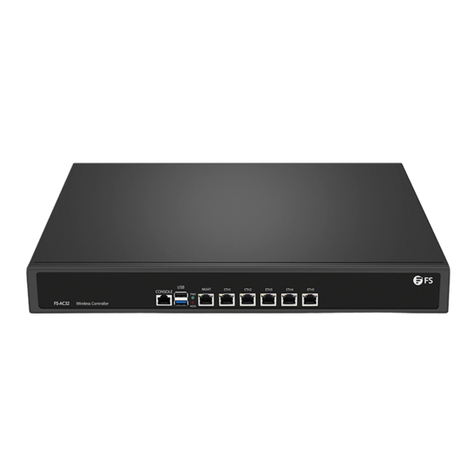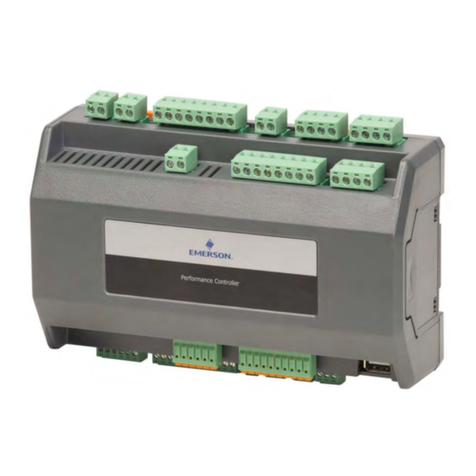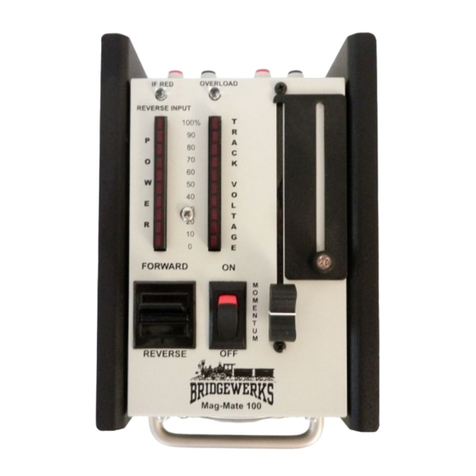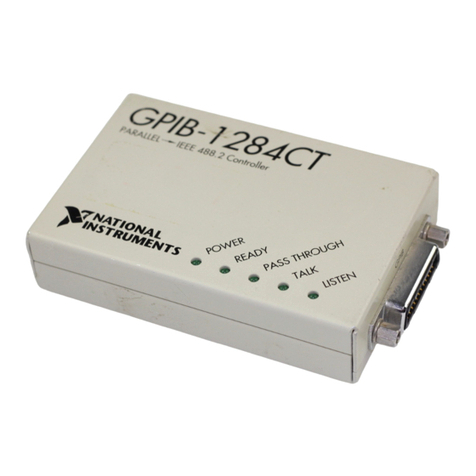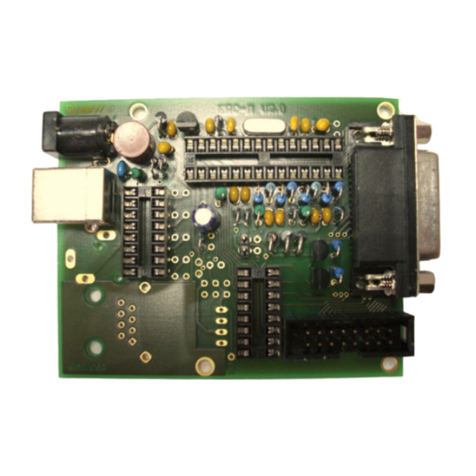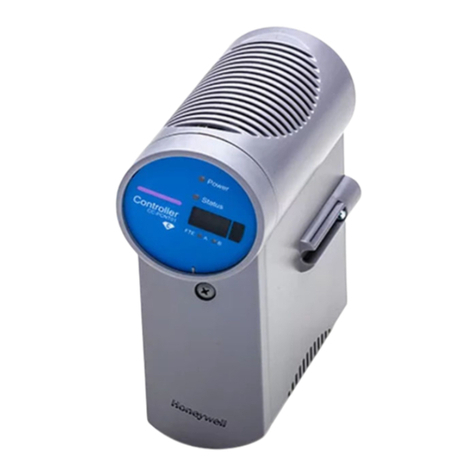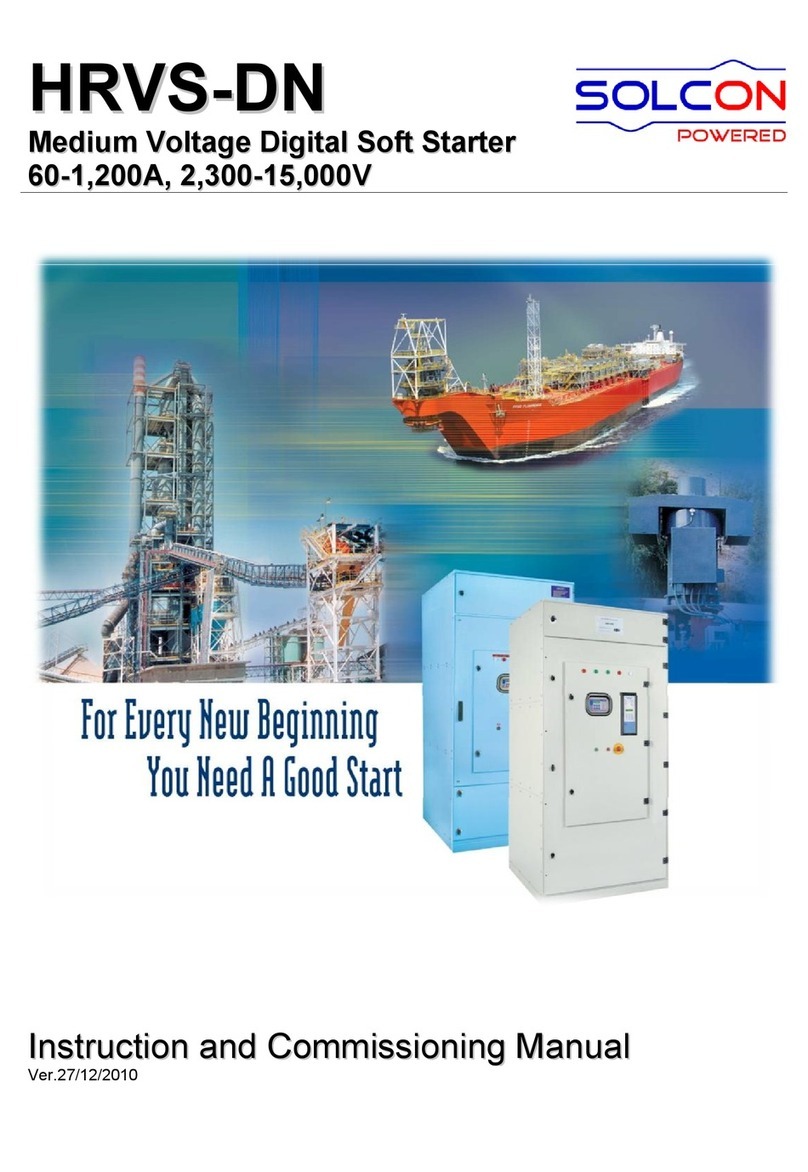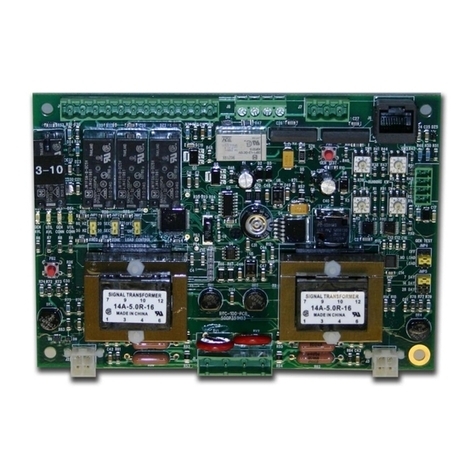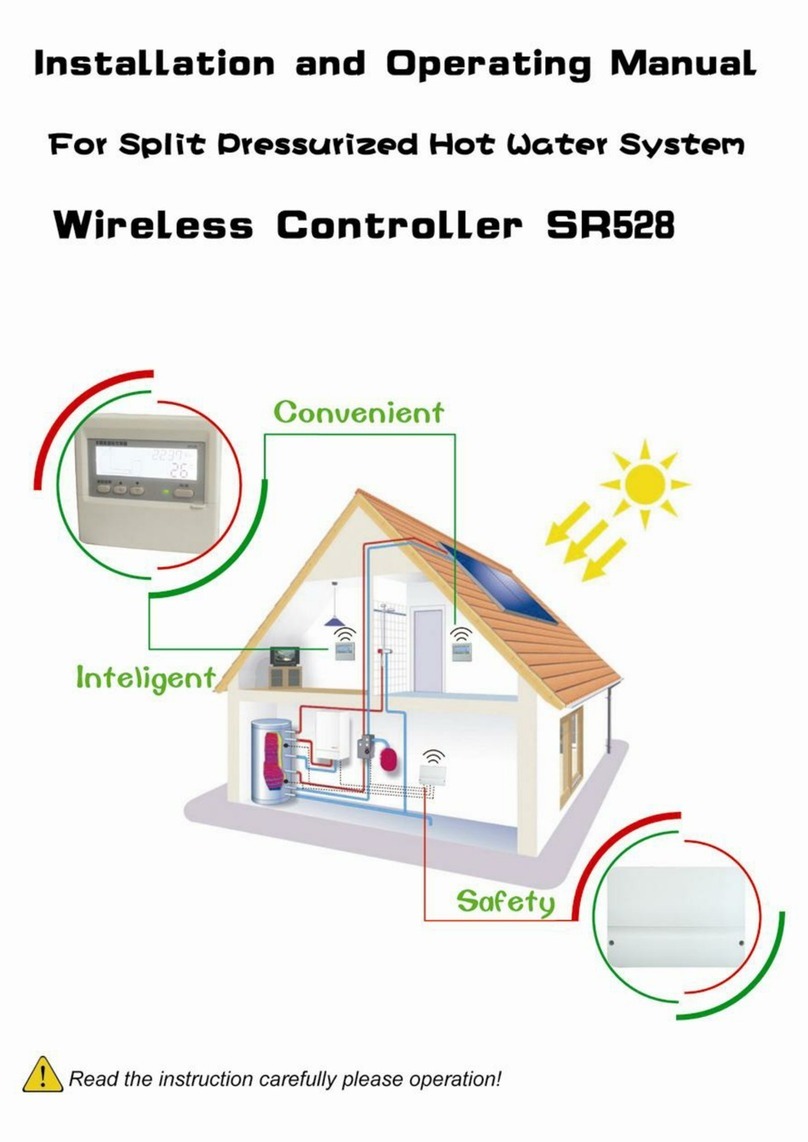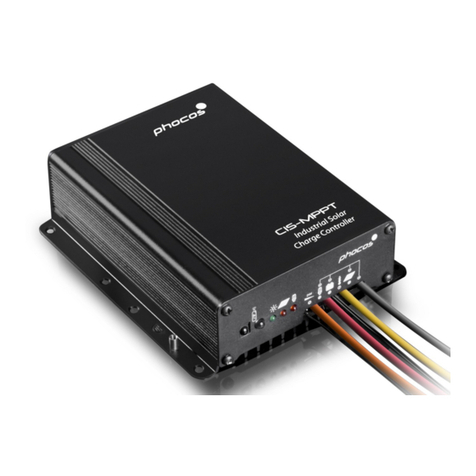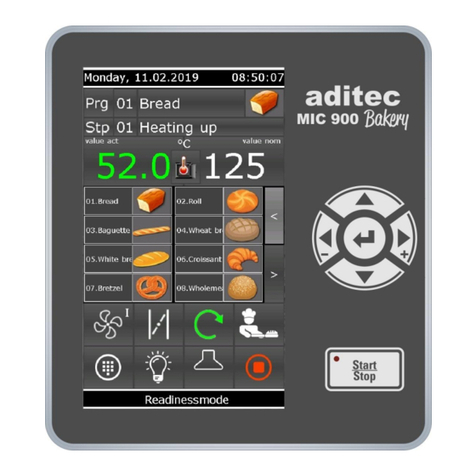WEG CP-D User manual

CP-D
Emergency Stop Control
Motors | Automation | Energy | Transmission & Distribution | Coatings
User’s Manual


User’s Manual
Série: CP-D 301
Language: English
Document: 10010034430 / 00
Publication Date: 02/2023

Summary of Reviews
The information below describes the revisions made to this manual.
Version Review Description
-R00 First edition

Summary
1 ABOUT THIS DOCUMENT ............................................................... 1-1
1.1 OBJECTIVE .............................................................................................. 1-1
1.2 AUTHORISED PERSONNEL ................................................................... 1-1
1.3 SYMBOLS USED IN THIS MANUAL....................................................... 1-1
1.4 APPROPRIATE USE ................................................................................ 1-1
1.5 EXCLUSION OF LIABILITY ..................................................................... 1-1
2 DESCRIPTION................................................................................... 2-1
2.1 DESTINATION AND USE......................................................................... 2-1
2.2 TECHNICAL INFORMATION................................................................... 2-1
2.3 SAFETY LEVELS...................................................................................... 2-2
3 INSTALLATION AND CONNECTIONS............................................. 3-1
3.1 INSTALLATION INSTRUCTIONS............................................................ 3-1
3.2 INPUTS..................................................................................................... 3-1
4 OPERATIONAL PRINCIPLE AND SETTINGS.................................. 4-1
4.1 TERMINALS DESCRIPTION ................................................................... 4-1
4.2 OPERATION MODE................................................................................. 4-1
4.3 LED FUNCTIONING................................................................................. 4-2
5 SETUP AND MAINTENANCE ........................................................... 5-1
5.1 FUNCTIONAL TESTING AND MAINTENANCE...................................... 5-1
5.2 AUTO-CHECK FUNCTIONS ................................................................... 5-1
6 DISMOUNTING AND DISPOSAL ..................................................... 6-1
6.1 DISASSEMBLY ........................................................................................ 6-1
6.2 DISPOSAL................................................................................................ 6-1
7 APPENDIX ......................................................................................... 7-1
7.1 START CONFIGURATION....................................................................... 7-1
7.2 SENSOR CONFIGURATION.................................................................... 7-1
7.3 ACTUATOR CONFIGURATION............................................................... 7-1
8 DECLARATION OF CONFORMITY ................................................. 8-1
8.1 CE ............................................................................................................. 8-1
8.2 UKCA........................................................................................................ 8-2

CP-D | 1-1
About this Document
1
1 ABOUT THIS DOCUMENT
1.1 OBJECTIVE
This manual has every single information about the device and shall answer all questions involving
it. Here is gathered all information about mounting, setups, connections and placement of the
safety relay and its appendages. With safe operation in mind, this document ensures safety if
read and followed in its fully.
1.2 AUTHORISED PERSONNEL
Only trained and qualified personnel are authorized to operate, handle and set the device onto
its proper panel.
It is highly important to ensure the operator read and understood the content of this manual
before handling with this device.
1.3 SYMBOLS USED IN THIS MANUAL
There will be used three identical symbols but with different writings to identify them from
each other.
WARNING!
Imminent danger. It is the highest at the notification scale and requires the
maximum regard.
CAUTION!
Normal danger. It means a medium threat, not as dangerous as a "warning" but
bigger than a simple "attention".
ATTENTION!
Advisory notice. Used as a simple notification that requires a little more care.
1.4 APPROPRIATE USE
This device was developed for safety related usages as part of machinery, whether industrial.
It is the responsibility of the manufacturer of the machinery to ensure the proper functionality
of the safety device.
Be aware of using the device according to the application usage detailed on the next chapters.
1.5 EXCLUSION OF LIABILITY
The device’s manufacturer excludes itself from the liability of bad handling or misuse which
could result into dangerous event.
It is not allowed to have the device opened or even repaired by non authorized personnel.

Description
2
CP-D | 2-1
2 DESCRIPTION
2.1 DESTINATION AND USE
The Emergency Stop Controls were developed to increase the safety level for the emergency
stop system of the machine. These controls supervises the contacts of emergency buttons,
sensors used in protective grids and other important devices that are vital for the system safety.
The device is meant to go into control cabinets, with its own proper safety level.
2.2 TECHNICAL INFORMATION
General Data
Standards IEC 60 204-1, ISO 13850, EN 60947-5-1
Star conditions Start button only
Feedback circuit (Y/N) Yes
Mechanical Data
Connection type Screw terminals
Cable section 2 mm²
Connection cable Rigid or flexible
Removable terminals (Y/N) No
Lifespan 107operations
Ambient Conditions
Ambient temperature -10 ºC to +55 ºC
Storage and transport -40 ºC to +70 ºC
Protection level IP20
EMC rating To EMC Directive
Electrical Data
Power consumption max. 2.5 W
Power supply 24 V dc/ac, ±10 %
Frequency range 50 Hz / 60 Hz
Tripping current protection 100 mA
Monitored Inputs
Cross-wire detection (Y/N) Yes
Wire breakage detection (Y/N) Yes
NO contacts 3
NC contacts 1
Cable lengths Varies. Refer for the conductor’s maximum
resistance
Conductor’s resistance max. 40 Ω
Output
Number of safety contacts 3 normally opened contacts
Number of auxiliary contacts 1 normally closed contact
Contact capacity 4.5 A - 30 Vdc / 200 W - 250 Vac
Utilisation category to EN 60947-5-1 AC-15 / DC-13: EN 60947-5-1
Dimensions (H/W/L) 113.1 mm x 97 mm x 22.7 mm

Description
2
2-2 | CP-D
2.3 SAFETY LEVELS
Standards IEC 60 204-1, ISO 13850, EN 60947-5-1,
EN ISO 13849-1, IEC 61508, EN 62061
PL Category E
Control Category 4
PFH-Value 2,82 E-10 1/h
SIL 3
Service Life 20 years

Installation and Connections
3
CP-D | 3-1
3 INSTALLATION AND CONNECTIONS
3.1 INSTALLATION INSTRUCTIONS
The device must be set on a DIN rail by the bottom of the enclosure.
Connect the back of the enclosure onto the rail by its bottom and push it down until it clicks
onto the rail.
The emergency stop buttons to be applied shall be able to carry the maximum output current
of the installed voltage supply unit.
3.2 INPUTS
This device provides two inputs in dual channel system with anti-fraud protection.
One of the inputs provides actuation with positive signal and the other with negative signal (they
cannot be interconnected).
The inputs must be switched on with normally closed contacts, as described in this manual.
These contacts may be emergency stop buttons, electronic buttons, sensors used in protective
grids or any mechanical pulsating button with two NC contacts.
The reset’s Y1 and Y2 inputs must be connected with a normally opened contact such as a
push button or a reset button of any kind.
For a proper connection of the inputs, refer to the appendix of this manual and look for the
figures 1 and 2 of that chapter.
ATTENTION!
It is mandatory to have the contacts properly connected in order to avoid misuses
and even to guarantee contacts’ and device’s integrity.

Operational Principle and Settings
4
CP-D | 4-1
4 OPERATIONAL PRINCIPLE AND SETTINGS
4.1 TERMINALS DESCRIPTION
Voltages A1
A2
+24 Vdc / 24 Vac
0 Vdc / 24 Vac
Inputs S11-S12
S21-S22
Positive input channel 1
Negative input channel 2
Outputs
13-14
23-24
33-34
41-42
First safety enabling circuit
2nd safety enabling circuit
3rd safety enabling circuit
Auxiliary NC circuit
Start Y1-Y2 Automatic external reset
Alongside, the schematic of the frontal label, with led indicators and screw terminals.
To start using the manual should be pressed a button normally open between terminals Y1 and Y2.
Indicator Led of power supply
voltage presence
Indicator Led of emergency button
contact supervision
Indicator Led of safety relay
activation
4.2 OPERATION MODE
After connecting the inputs properly as described on the last chapter (see Section 3.2 INPUTS
on page 3-1, supply the device with rated voltage without deactuating any input (S11-S12/
S21-S22 closed) nor the reset button, the outputs remain in off state.
While in off state, even if the inputs S11/S12 and/or S21/S22 are deactuated the safety relay
will remain off. For the activation of the circuit’s outputs, the reset button must be actuated.
If one or both inputs, S11-S12 or S21-S22, are deactuated, the outputs switch to the off state
immediately.
For a new cycle (new drive), both inputs must be deactuated, to deactivate the outputs, and
then actuated back again. Afterwards, the reset button must be actuated.

Operational Principle and Settings
4
4-2 | CP-D
4.3 LED FUNCTIONING
Power Power Supply Voltage
S1 Channel 1 signalling
S2 Channel 2 signalling
Out Output contact’s activation

Setup and Maintenance
5
CP-D | 5-1
5 SETUP AND MAINTENANCE
5.1 FUNCTIONAL TESTING AND MAINTENANCE
The device should be tested before full operation.
For that, the correct fixing should be assured as so the cable and connections integrity and the
electrical function of the device should be checked.
Regular inspections should be performed to check the integrity of all parts described above.
ATTENTION!
The device has to be integrated into the periodic check-ups according to the
Ordinance on Industrial Safety and Health, however at least 1x/year.
5.2 AUTO-CHECK FUNCTIONS
Inputs can be actuated individually in a double channel without the necessity for simultaneity.
However when you press the manual start button, the two inputs should necessarily be
deactuated for the activation of the system’s outputs.
This device adopts positive polarity to activate inputs S1 and negative polarity to activate input S2.
ATTENTION!
Therefore, they cannot be interconnected (changed to single channel input) or
the functionality of the device will be corrupted.
The circuit shall not activate the outputs in case it is powered on with inputs actuated, thus
preventing unintentional activation.

Dismounting and Disposal
6
CP-D | 6-1
6 DISMOUNTING AND DISPOSAL
6.1 DISASSEMBLY
This device should only be disassembled after its de-energizing.
Pull the metallic latch, below the enclosure, towards you (using preferentially a screw driver)
and pull the device up.
6.2 DISPOSAL
As this device should be handled and carried with care, it should be disposed likewise.
It should be disposed in accordance under national prescriptions and legislations.

Appendix
7
CP-D | 7-1
7 APPENDIX
7.1 START CONFIGURATION
The device needs an external normally opened reset button to activate the outputs. This reset
button may be from a simple push button to a NO contact or any other one. The only mandatory
feature it should bare, it’s a normally opened input. (i.e. Figure 7.1 on page 7-1).
7.2 SENSOR CONFIGURATION
An example of configuration is described below (Figure 7.2 on page 7-2):
Dual channel emergency stop circuit with command devices to DIN EN ISO 13850 and EN
60947-5-5.
Within, the device recognizes/detects wire breakages and earth leakages in the control circuits.
It also detects cross-wire shorts between the control circuits.
7.3 ACTUATOR CONFIGURATION
As the device has two magnetic safety switches, it is made available a two-channel control
according to EN 60947-5-3.
Because of this configuration, at least one contact with positive break should be necessary to
interrupt and deactivate de outputs’ system.
This control system recognizes wire breakage and earth faults in the central circuit.
Likewise, the cross-wire short circuits between the control circuits are detected.
Reset
Input Start
Safety
relays
Control
circuit
Supply
Figure 7.1: Internal blocks’ diagram

Appendix
7
7-2 | CP-D
K1
K1
K2
K3
K2
K3
Y1 Y2 13 23 33 41 A1
A214 24 34 42S22 S12 S11S21
24 Vdc
Note:
Utilization of feedback
function
Emergency
button
Start
Fuse
CP-D
Figure 7.2: Example of configuration

Appendix
7
CP-D | 7-3
S21 S22
MR BC PT
S12S11
AZ BC PT
Sensor 1
Figure 7.3: Gate sensor

Declaration of Conformity
8
CP-D | 8-1
8 DECLARATION OF CONFORMITY
8.1 CE
Table of contents
Other WEG Controllers manuals

